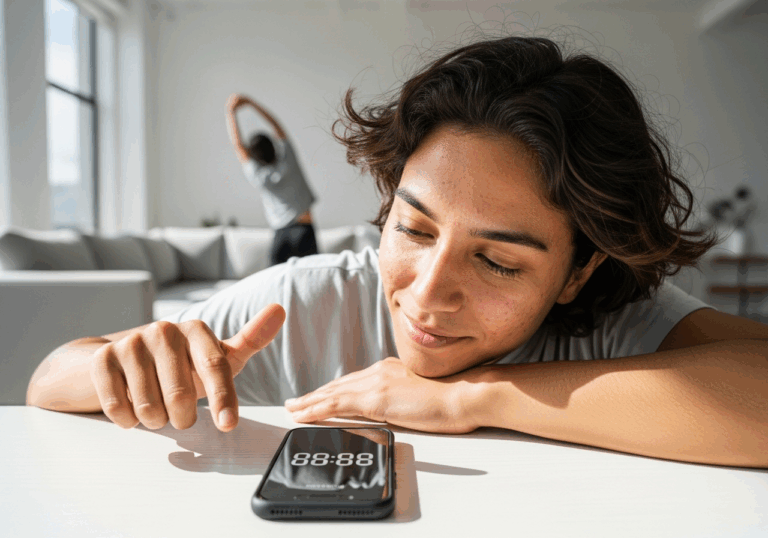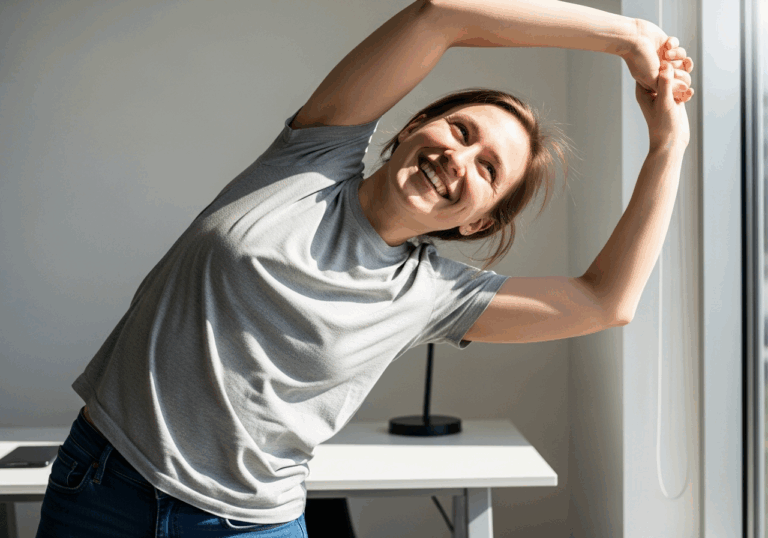Science-Backed Tips
Boost Alertness with a 3-Minute Walk
A 40% reduction in fatigue with a brief walking break.
📊 Did you know?
💡 Why It Matters
1️⃣
Implementing short walking breaks can lead to a significant 40% reduction in fatigue, enhancing workplace productivity.
2️⃣
Regular microbreaks can improve overall employee engagement, potentially reducing turnover rates and associated costs.
3️⃣
Increased alertness from brief physical activity can lead to better decision-making and creativity in problem-solving.
✅ Try These Micro-Tips
🎯
Take a 3-minute walk every afternoon to boost alertness.
🎯
Incorporate short stretching sessions every hour to maintain energy levels.
🎯
Set reminders to step away from your desk for brief breaks throughout the day.
🎯
Encourage colleagues to join you for walking breaks to enhance social interaction.
📚 The study
The research highlights that just a short walking break can help employees recover from morning fatigue, allowing them to bounce back and maintain their focus throughout the day.
With findings indicating that these small movements can lead to a remarkable 40% reduction in fatigue, the implications for workplace productivity are profound.
Not only do regular microbreaks enhance overall employee engagement, but they also have the potential to lower turnover rates and the associated costs of hiring and training new staff.
Furthermore, the increased alertness resulting from these brief physical activities fosters better decision-making and sparks creativity in problem-solving.
By prioritizing short walking breaks, organizations can cultivate a more energized and engaged workforce, ultimately driving success and innovation.
Embracing this simple yet effective strategy could transform the workplace into a more dynamic and productive environment, where employees feel revitalized and ready to tackle challenges head-on.
❓ Frequently Asked Questions ❓
Learn more
What is the benefit of taking a 3-minute walking break in the afternoon?
A 3-minute walking break can improve subjective alertness and reduce fatigue by approximately 40%. This boost in energy can enhance workplace productivity and engagement among employees.
How do microbreaks affect employee engagement?
Regular microbreaks can significantly improve overall employee engagement. This increase in engagement may help reduce turnover rates and associated costs for organizations.
What is the recommended frequency for taking breaks during the workday?
It is beneficial to incorporate short walking breaks every afternoon and stretching sessions every hour. These practices help maintain energy levels and improve focus throughout the day.
How can walking breaks impact decision-making and creativity?
Increased alertness from brief physical activity can lead to better decision-making and enhanced creativity in problem-solving. This can result in more effective outcomes in workplace tasks.
What are some ways to remind myself to take breaks?
Setting reminders to step away from your desk for brief breaks can help ensure you take them regularly. You can also use apps or timers to prompt you to take these important pauses.
Can walking breaks be a social activity?
Yes, encouraging colleagues to join you for walking breaks can enhance social interaction. This not only boosts morale but also fosters a sense of community in the workplace.
What is the significance of small movements during the workday?
Small movements, such as walking or stretching, can significantly boost mood and engagement. These activities contribute to overall well-being and productivity in the workplace.
How does fatigue recovery relate to microbreaks?
Microbreaks have been shown to help employees bounce back from morning fatigue. This recovery is crucial for maintaining energy and focus throughout the workday.
What is the impact of fatigue on workplace productivity?
Fatigue can significantly hinder workplace productivity and decision-making abilities. Implementing strategies like walking breaks can mitigate these effects and enhance overall performance.
Is there scientific evidence supporting the benefits of walking breaks?
Yes, studies have shown that taking short walking breaks can lead to a substantial reduction in fatigue and an increase in alertness. This evidence supports the implementation of such breaks in workplace settings.





